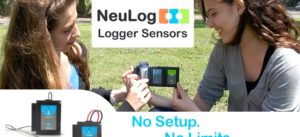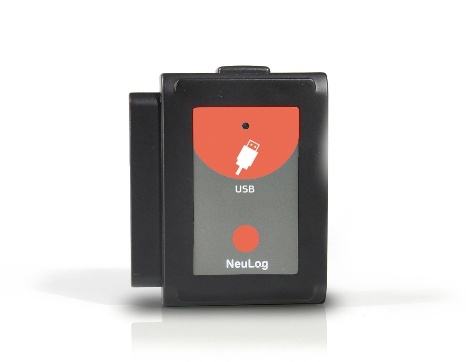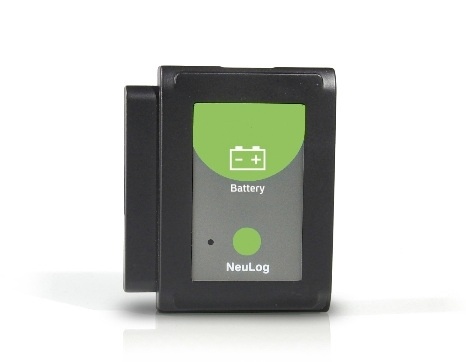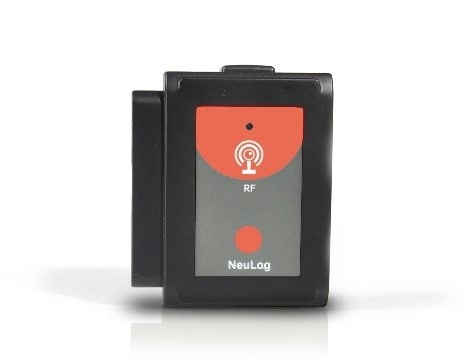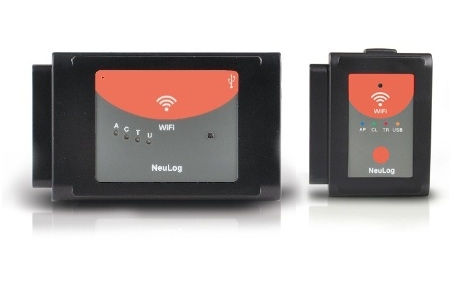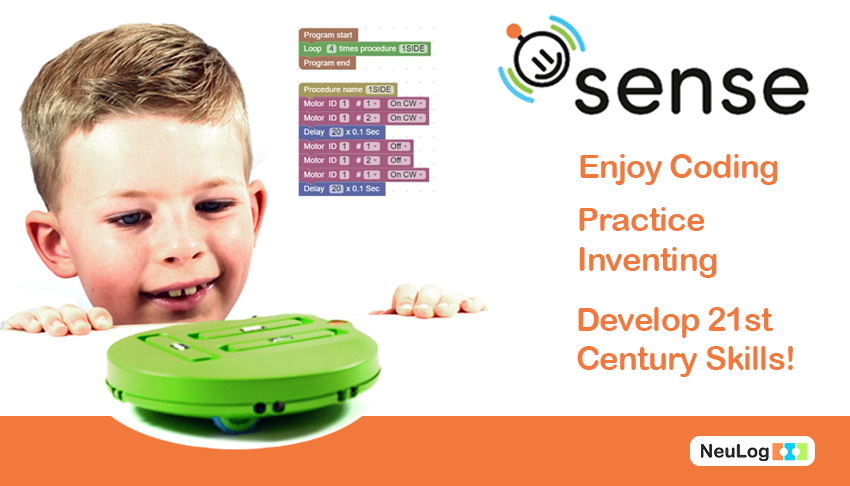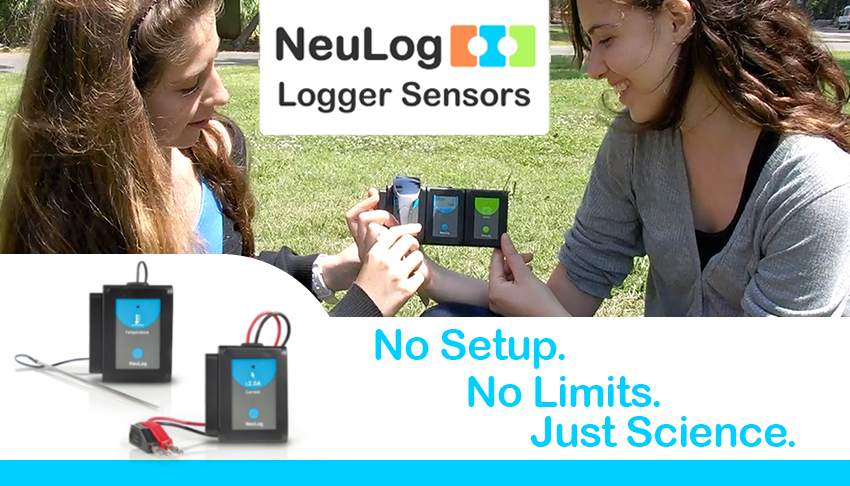|
|
|
 |
|
Sense of Touch
GSR (Galvanic Skin Response) logger sensor
- To understand that the skin is the largest sensory organ in the body.
- Explore how the skin detects touch, pressure, temperature, and pain.
- Identify which parts of the body are the most sensitive to touch.
- To recognize that fingers, lips, genitals, and toes are among the most sensitive areas of the body.
|
|
|
|
 |
|
Blood Pressure B-1 ver. 3.2.5
Blood pressure logger sensor
- Understand the basics of blood pressure.
- Compare the blood pressure of students in the class.
- Investigate how external parameters such as exercise affect the blood pressure.
|
|
|
|
 |
|
Diffusion in Biology B-2 ver. 3.2.11
Conductivity logger sensor
- Study the effect of different concentration gradients of NaCl ions on their diffusion rate by measuring their conductivity.
|
|
|
|
 |
|
Respiration B-3 ver. 3.2.8
Oxygen logger sensor
- Study the diffusion process of oxygen and carbon dioxide between the alveoli and pulmonary capillaries.
- Determine the percentage of oxygen in exhaled air while resting and after physical activity.
|
|
|
|
 |
|
Enzyme Activity B-7 ver. 3.2.3
Temperature logger sensor
Pressure logger sensor
- Understand basic concepts of enzyme activity.
- Learn about the enzyme catalase and how it breaks hydrogen peroxide.
- Investigate how different quantities of an enzyme affect the enzyme activity rate.
- Investigate how the temperature affect the enzyme activity rate.
|
|
|
|
 |
|
Thermoregulation and Perspiration B-9 ver. 3.2.7
Relative humidity logger sensor
- Learn about homeostasis and thermoregulation.
- Learn about the importance of perspiration.
- Understand the relationship between perspiration and relative humidity by using a relative humidity sensor.
|
|
|
|
 |
|
Photosynthesis B-10 ver. 3.2.9
CO2 logger sensor
- Study the processes of respiration and photosynthesis of a plant by measuring CO2 rates.
- Learn about gross and net photosynthesis rates.
|
|
|
|
 |
|
Respiration of Germinating Seeds B-11 ver. 3.2.3
CO2 logger sensor
- Learn about cellular respiration, dormancy and germination.
- Compare respiration rates of germinating and non-germinating beans.
- Investigate the effect of ice cold water on the respiration of the germinating beans.
|
|
|
|
 |
|
Heart Rate and Coughing B-18 ver. 3.2.9
Heart rate & pulse logger sensor
- study the changes in heart rate at rest and after coughing.
|
|
|
|
 |
|
Heart Rate and Physical Activity B-19 ver. 3.2.12
Heart rate & pulse logger sensor
- Measure a student’s heart rate at rest.
- study the effect of two levels of physical activity on the heart rate.
|
|
|
|
 |
|
Soil Moisture B-20 ver. 3.0.5
Soil moisture logger sensor
- Learn about the mechanism of the soil moisture sensor (tensiometer).
- Monitor the soil moisture of a plant indoors or outdoors.
- Understand the effect of temperature on the moisture of the soil.
|
|
|
|
 |
|
Emotional Stress Measurement
GSR (Galvanic Skin Response) logger sensor
- Learn about the fight or flight response.
- Examine how stimulation of the human system (by touch, smell, sight or sound) causes the sweat glands in the hand to secrete sweat.
- Understand the principles of a polygraph (lie detector).
|
|
|
|
 |
|
Monitoring Yeast Growth B-38 ver. 3.0.5
Two Turbidity logger sensors
- Learn about the life cycle of yeast.
- Monitor yeast growth by using a turbidity sensor.
- Plot a growth curve.
|
|
|
|
 |
|
Electrocardigram logger sensor B-40 ver. 3.0.2
Electrocardigram logger sensor
- Learn about the electrical activity of the heart.
- Study the principles of an ECG measurement.
- Compare normal ECG graphs to those of people with heart conditions.
|
|
|
|
 |
|
The Lungs and Spirometry Parameters B-41 ver. 3.0.4
Spirometer logger sensor
- Learn about the mechanism of breathing.
- Learn about lung volumes and capacities.
- Compare these parameters before and after physical activity.
- Compare these parameters among different students.
|
|
|
|
 |
|
Temperature Variations in the Human Body B-42 ver. 3.0.5
Infrared thermometer logger sensor
- Understand the difference between body core temperature and skin temperature.
- Investigate the change in skin temperature as a function of the body part.
- Compare skin temperature values of different students in the group.
|
|
|
|
 |
|
Respiration Rates B-43 ver. 3.0.3
Respiration monitor belt logger sensor
- Learn about the lungs and respiration rates.
- Measure respiration rates of the students.
- Compare female and male respiration rates.
- Compare respiration rates before and after exercise.
|
|
|
|
 |
|
Muscle Strength B-44 ver. 3.0.4
Hand dynamometer logger sensor
- Learn about the skeletal muscles.
- Find correlations between dominant hand, gender and more to grip strength.
|
|
|
|
 |
|
Ammonium and Nitrate in an Aquarium B-45
Ammonium logger sensor
Nitrate logger sensor
- Learn about the nitrogen cycle in an aquarium with fish and in a pond.
- Examine the presence of ammonium and nitrate ions in an aquarium with fish, in different stages of the nitrogen cycle.
|
|
|
|





























